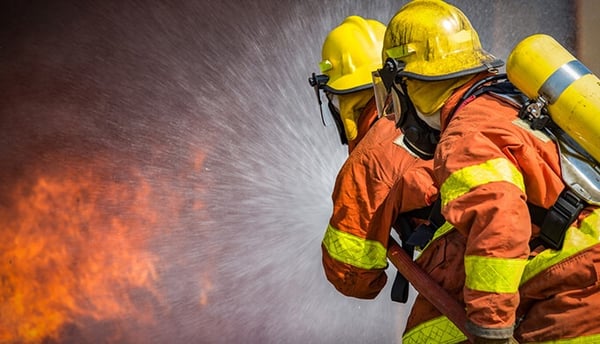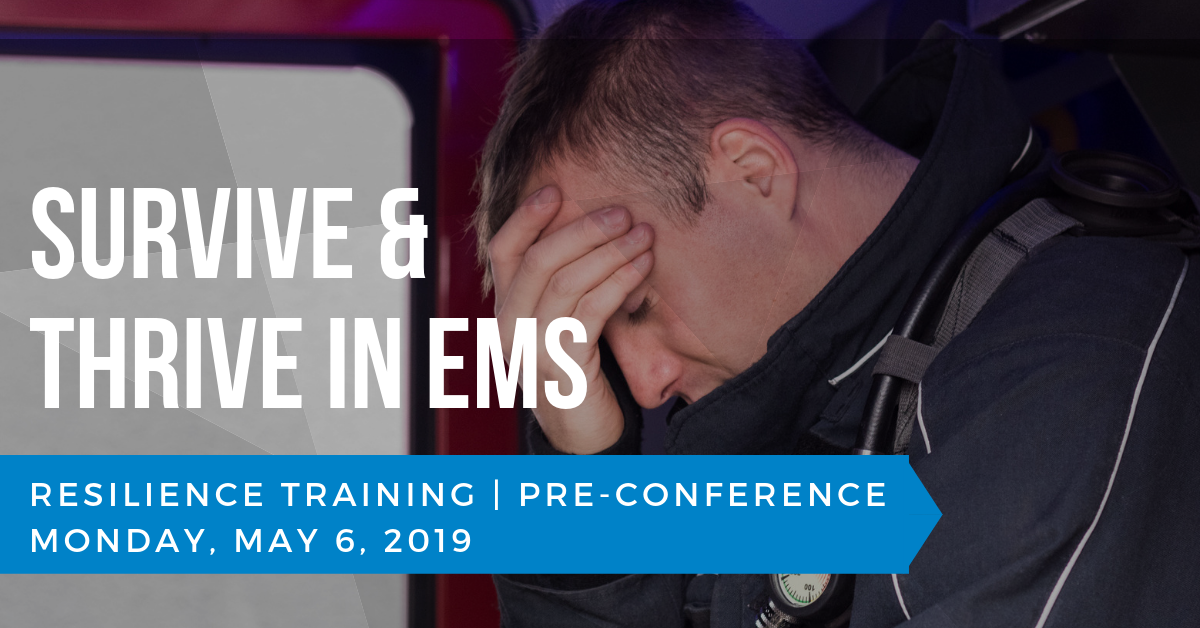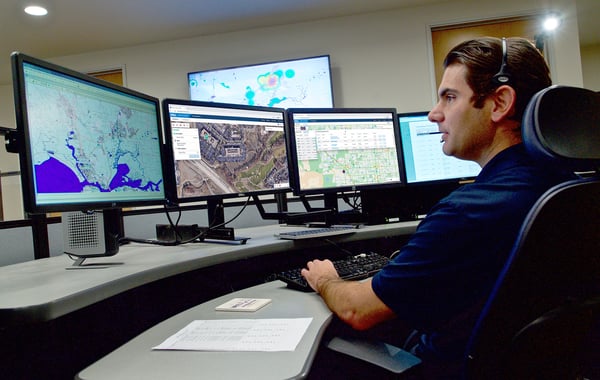Your Agency Isn’t Getting Paid: Here’s What You Can Do
Prevent Fire & EMS burnout with 3 key tactics
How to better recognize personnel burnout symptoms and proactively protect your crew against them (6 min read) Emergency responders face physically, mentally and emotionally draining situations on a regular basis
Was this information valuable?

How to better recognize personnel burnout symptoms and proactively protect your crew against them
(6 min read) Emergency responders face physically, mentally and emotionally draining situations on a regular basis. Whether they consciously realize it or not, these demanding situations don’t just roll off of their shoulders—they leave a lasting impact.
VFIS Education Specialist Justin Eberly, an active EMT and volunteer firefighter, notes, "On any given day, emergency service personnel may witness the worst day in someone’s life. To mitigate either the cause or effects of an emergency, a responder must bear a burden that comes with the badge."
Emergency responders understand the heavy burdens that come along with their duty to serve all too well. In order to better deal with them, it’s important to learn to recognize them (as well as the red flags that appear beforehand.)

Emergency responder burnout: what is it?
Some people think the term “burnout” is synonymous with being tired, but it’s not. Burnout is actually a much bigger concern. It can cause more issues than just fatigue, especially for people working in ambulance centers and fire departments.
Burnout begins with the persistent presence of chronic stress. Chronic stress has been linked to a broad range of physical and mental health problems, including heart disease, obesity, diabetes, high blood pressure, insomnia, lowered immune system, PTSD, anxiety and depression.
According to the U.S. Fire Administration, the term “burnout” refers to the brain’s psychological response to the experience of chronic work stress.
There are 3 main parts to this response. They include:
- Cynicism. Rather than feeling compassionate and connected to the people they serve, a first responder might start to experience feelings of anger, blame or judgement.
- Disengagement. When feelings of compassion start to subside, compassion avoidance can take place. This can be just as mentally destructive as being overly compassionate, or "suffering with victims." When a crew member is avoiding compassion, they may seem disengaged, and fully withdraw from company functions, other members, mentors and even family members. They might exhibit a lack of feelings or satisfaction with their job, and express feelings of ineffectiveness.
- Exhaustion. Burnout causes more than just fatigue—it causes outright exhaustion. Crew members might suffer from insomnia, seem “out of it” or especially irritable and make unhealthy choices.
Understanding the signs of burnout is important—but so is understanding what causes it. Knowing the causes can help us to take steps toward preventing it.

What causes burnout?
Many occurrences combined cause us to reach “burnout” level. It is something that happens over time. Some factors that contribute to emergency responder burnout are:
- Traumatic and stressful event exposure
It’s almost a given that those working as firefighters and EMTs will encounter traumatic events. They respond to them regularly when on-call. For this reason, it comes as no surprise that about 20% of firefighters and paramedics suffer from Post-Traumatic Stress Disorder. Individuals with PTSD are six times more likely to attempt suicide. In fact, in 2017, more firefighters died from suicide than in the line of duty.
PTSD symptoms include:
- Inability to sleep and nightmares
- Avoidance or distancing behaviors
- Negative thoughts and moods
- Increased irritability, outbursts or reckless behavior
- Demands that are physically exhausting
Responding to emergencies isn’t just dangerous and stressful—it’s incredibly physically demanding, too. Working to maintain good health and being “in good shape” can help balance out the intense demands that lead to burnout.
- Sleepless nights and demanding hours
Lack of sleep causes a broad array of health issues, including heart disease, obesity, mood swings and an unhealthy diet. This is another factor that significantly impacts first responders. They spend long stretches of time on-call, and are often woken in the night to respond to emergencies. 50% of EMS personnel report experiencing poor sleep. When we consider that 54% of EMS services still use 24-hour shifts, sleep issues are not surprising. When tested, a striking 37% of firefighters were confirmed to have at least one significant sleep disorder.
- Emergency Response culture
When asked, people repeatedly list firefighting as one of the most stressful professions. Similarly, 86% of participants in a recent EMS survey noted that they had experienced “critical stress.” Despite being under significant stress, however, emergency responders rarely seek professional help.
There is an industry-wide stigma against obtaining physical or mental health assistance, and it inhibits many first responders from seeking the help they need to effectively fight burnout. Emergency service leaders across the nation are working to change this stigma and to provide more communication and better mental and physical health support to their teams. The importance of moving in this direction cannot be overstated.

How can you best avoid burnout within your crew?
There are a few things that you can do to better ensure that your team is actively working to prevent burnout. Staying on top of these items can help you continue to provide the best care to those in need, while protecting your brothers and sisters in the industry at the same time.
Cultivate an open culture
Foster communication and allow for open discussion about stress, depression and health issues. Provide outlets for relief and professional treatment. Work to attain a company-wide culture that fully believes in talking, listening, providing support and getting help when needed. Talk with each other after responding to difficult calls. Breakdown the negative stigmas attached to asking for “help” or feeling “emotions” by helping your crew members see things in a new light.
Crack down on never-ending shifts
Take a good hard look at the shift hours and requirements your volunteers and members have to juggle. Focus on making shift adjustments that better support a healthy work/life balance. Work on interacting with community often to recruit new volunteers who can help to shoulder some of the responsibilities of your organization. Consider offering a Length of Service Awards Program to keep more crew members involved and share the burdens associated with the job across more shoulders. Encourage down time, family time, mental health days and vacation time as you’re able.
Commit to holistic wellness
A robust wellness program shouldn’t just be about finding time to get to the gym. Yes, it needs to include physical fitness elements, but it should also encourage regular physicals, health screenings, stress management, mental health initiatives, nutritional support and other important health-related resources. If you need help knowing where to start, check out our example here.
Burnout is a serious and complex problem that emergency service organizations are especially at risk for. Learn to recognize the red flags that come before it and get proactive about preventing it. By working together and implementing some best practices, you can significantly benefit your crew members and positively impact the service that they can provide to others across your community.
For more free safety and risk-related resources, please visit VFIS’ Safety Central page. VFIS is proud to be America’s Leading Insurance Provider for Emergency Organizations.
Related Posts
Meet the New ZOLL Dispatch and ZOLL Respond CAD Solution
Providers Can Even the Playing Field During Open Negotiations – Here’s How
ZOLL Pulse Blog
Subscribe to our blog and receive quality content that makes your job as an EMS & fire, hospital, or AR professional easier.
ZOLL Pulse Blog
Subscribe to our blog and receive quality content that makes your job as an EMS, fire, hospital, or AR professional easier.





